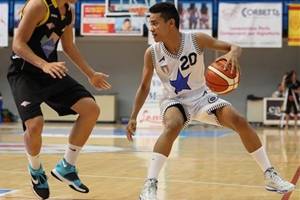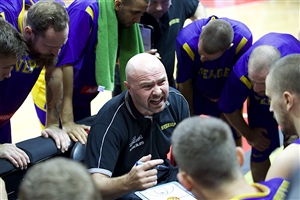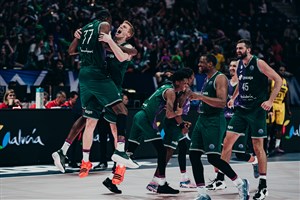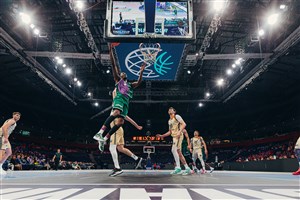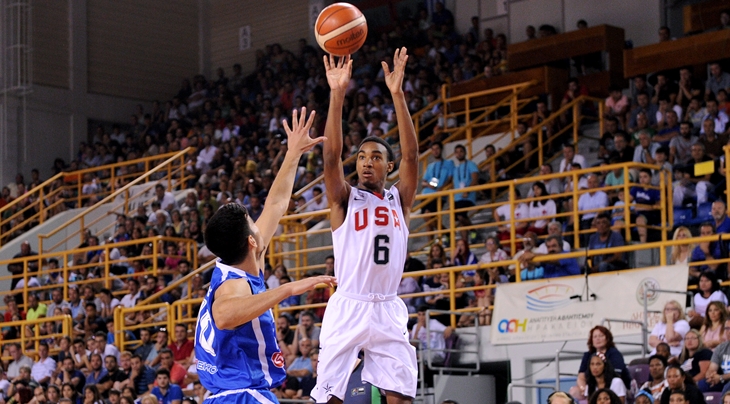
Is Terrance a fillip for Aussie basketball?
MELBOURNE (Paulo Kennedy’s View from Downunder) - When the NBL announced it would allow clubs to sign three imports for the 2016/17 season, the Adelaide 36ers approached filling that spot in a novel way.
Rather than sign the best possible player they could afford, they targeted 18-year-old NBA Draft prospect Terrance Ferguson, offering him an overseas 'gap year' between high school and what some believe is an inevitable NBA career.
The 36ers had their reasons for signing Ferguson, an important part of the USA's 2015 FIBA U19 World Championship gold medal winning team, but I'll talk about those a little later.
First though, let's look at how the experiment is playing out, with respected Draft Express analyst Jonathan Givony this week providing his thoughts on Ferguson's opening 11 games in the NBL.
The full article is a good read, complete with video analysis, but as a quick summary Ferguson's three-point shooting is going as expected (39 per cent), his defence is showing promise, while his ball-handling and physique both still require much work.
Nothing unexpected there, but what was notable was Givony's comments about Ferguson's surprising maturing - the way he fits in well with teammates, his willingness to make team plays, how little he tries to make plays outside his capabilities and the way he has built the trust of coach Joey Wright.
I'm sure this has been a pleasant surprise for the 36ers after young NBA second round picks Jordan McRae and Marcus Thornton came to the NBL and struggled to play or fit within the team setting.
Yea I think about it a lot. But I'm more than happy with the decision I made!! https://t.co/j0Apv6qlOH
— Terrance Ferguson (@the2kferguson) December 4, 2016
This is all the more impressive from Ferguson given the amount of attention his season in Australia is receiving. Visits from NBA scouts have become commonplace, yet Wright says his young swingman takes it in his stride, even when six scouts attended a training session recently.
"The kid played exactly like he did the day before and then played that way the day after when they weren't there," Wright said in a New York Times article.
"I was a college senior when the scouts came to see me and I was nervous as hell. So for him to be completely the same person, there is something special with this kid."
The 36ers are hoping the ease with which Ferguson has slotted into their club, their culture and the league - as well as the steady improvement he is making - will entice similarly talented young Americans to follow his route and use Adelaide as a springboard to the NBA.
Just in case you wanna watch @the2kferguson ALL DAY 🔂 #NBL17 #yourgame pic.twitter.com/tD2Uzjl13J
— NBL (@NBL) November 24, 2016
The benefits of that are increased brand awareness, the potential for sponsorship opportunities and the ability to attract older imports and Australian recruits who are also looking to make 'The Show', given their will always be NBA eyes on 36ers games.
If this is how things play out for Adelaide, and some other NBL recruits looking to head down the same path, it will certainly be an endorsement of the league's decision to allow three imports, which gave the 36ers the ability to experiment with Ferguson.
As a rule, however, the success of the third import is still very much up in the air. It was approved by a vote of players when there was going to be nine teams in the NBL. When Townsville folded there was no revote, leaving a bitter taste in the mouths of some.
As an on-court experiment it hasn't produced great results, the performances of Ferguson, Devin Williams, Michael Holyfield, Michael Bryson and Steve Blake in particular no better than local bench NBL talent, something rammed home by the way inexperienced players like Damon Heuir, Adam Doyle and Mason Bragg made Blake look like he was nailed to the floor.
In reality, the emergence of replacement players like Bragg, Kyle Adnam and Izzy Tueta has generated as much interest as the third imports, if not more, again reinforcing the long-known but often forgotten fact that American isn't necessarily better.
Up, under, around, in. Thanks for coming, from @KyleAdnam. @MelbUnitedHQ hit the lead on that crafty finish #yourgame pic.twitter.com/zmkpaZmaND
— NBL (@NBL) November 4, 2016
That doesn't mean the three import rule is a bad one, but I think come season's end the NBL should review it closely.
Is a rule that allows clubs who miss out on prime Aussie or Kiwi talent to sign an extra import a good thing? Definitely, it can potentially bring up the standard of the league and ensure fans see close games night after night.
Is a rule that sees multiple clubs signing imports who perform no better than locals who missed out on spots a good thing? Absolutely not, we are simply discouraging talented athletes from playing our sport and robbing fans of players they can grow to love.
The belated emergence of young guns Jason Cadee and Mitch Creek should also give pause for thought. Rewind 20 years and talented teenagers got the opportunity to be significant pieces straight away. In today's NBL, it takes them until their mid-20s to reach the very high level of play.
The 3-point king just doing his thing 👑🔥3️⃣3️⃣3️⃣3️⃣ @JasonCadee5 #NBL17 #yourgame pic.twitter.com/BE7f40uhLu
— NBL (@NBL) October 13, 2016
Is an import rule that could further delay the development of some of our best young players a good thing? I think not.
Some try to say the NBL isn't a development league, but they are sadly mistaken. Almost all the local talent in the NBL has developed in this competition. There is no other professional level in Australia to do so.
Some say the NBL isn't a feeder competition for the Boomers anymore? Those people are living in the past. Our national teams for future FIBA Basketball World Cup qualifiers will feature mostly NBL players.
I like the flexibility the three import rule gives clubs, and if there is expansion in the near future it will take care of the local component by creating more jobs. I also love that it allows teams to take an innovative approach like Adelaide have.
However, I don't think anyone benefits from a free-for-all approach where some seriously mediocre imports are added to what are already quality rosters. No one benefits from that.
The answer could be making the third import cost more against the salary cap so teams only use it if they need another high-level player. It could be that teams can only use the third import in two years out of every four. Something that gives clubs incentives to nurture Australian talent but a backdoor in seasons where they miss out.
One of the potential benefits of the Ferguson experiment could be that the next local with genuine NBA aspirations - be that Dante Exum, Ben Simmons, Isaac Humphries or William McDowell White - choose to spend their gap year playing at home.
That would be great for basketball Downunder and create serious buzz, but for it to happen our best young players have to see the right development opportunities exist here, and some clever refinement of the three import rule could be one step in that direction.
Paulo Kennedy
FIBA
FIBA's columnists write on a wide range of topics relating to basketball that are of interest to them. The opinions they express are their own and in no way reflect those of FIBA.
FIBA takes no responsibility and gives no guarantees, warranties or representations, implied or otherwise, for the content or accuracy of the content and opinion expressed in the above article.

